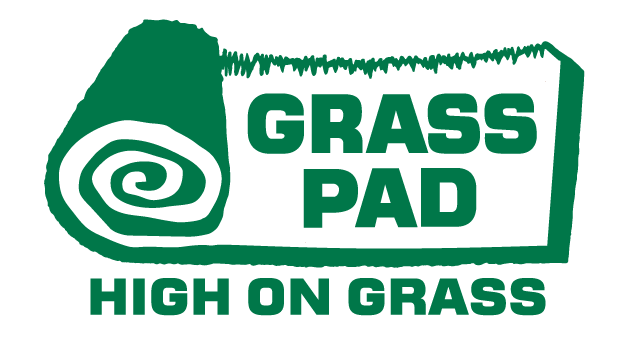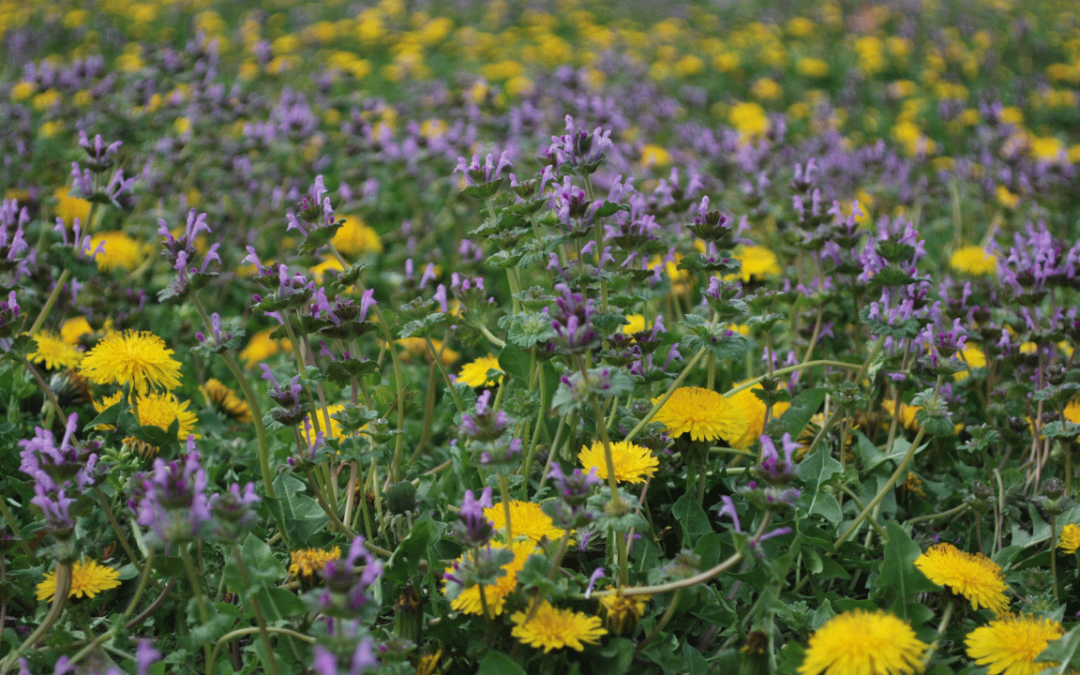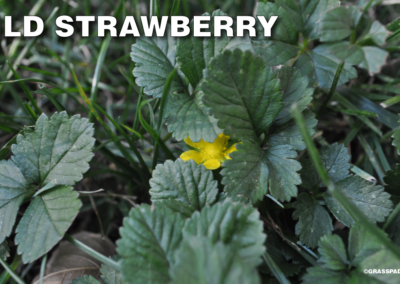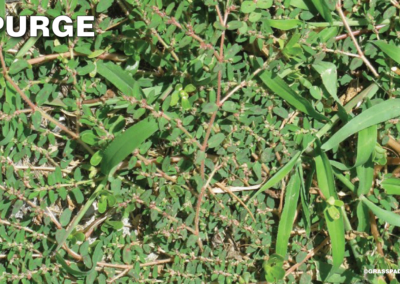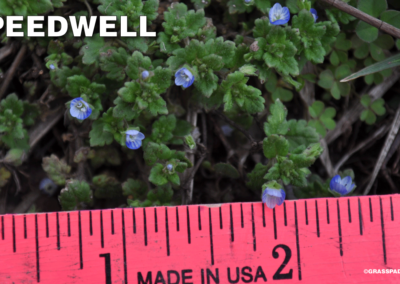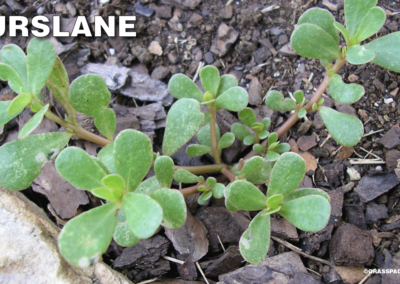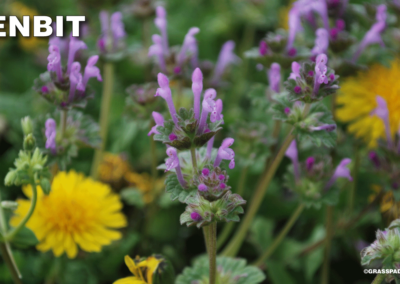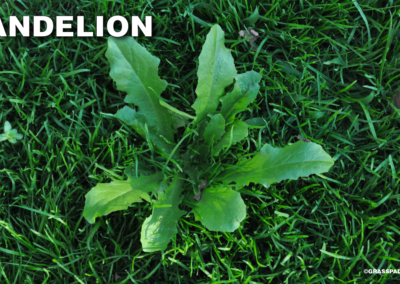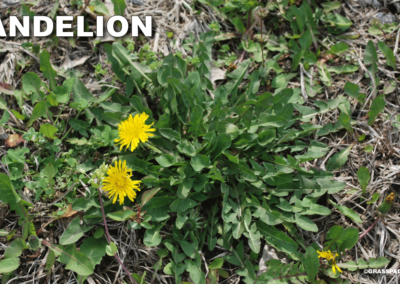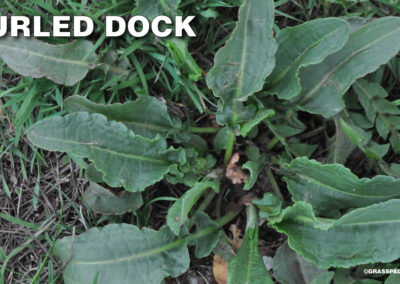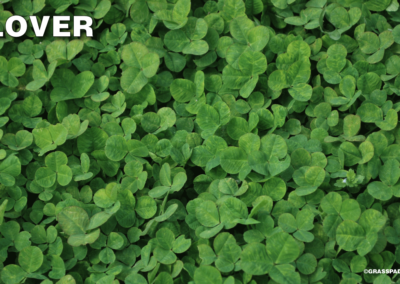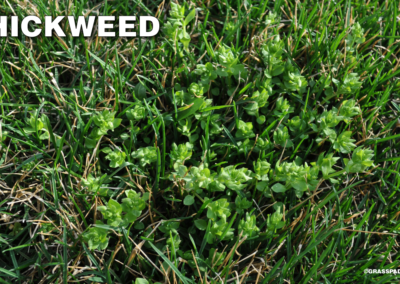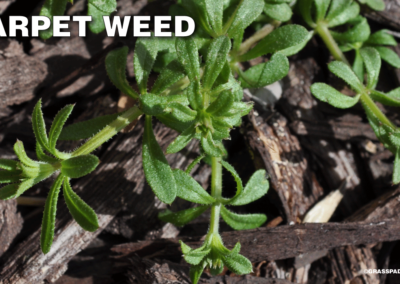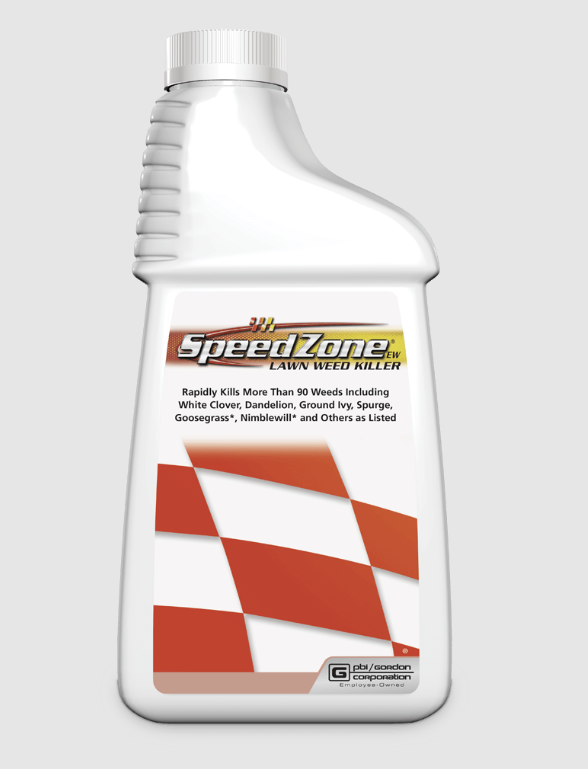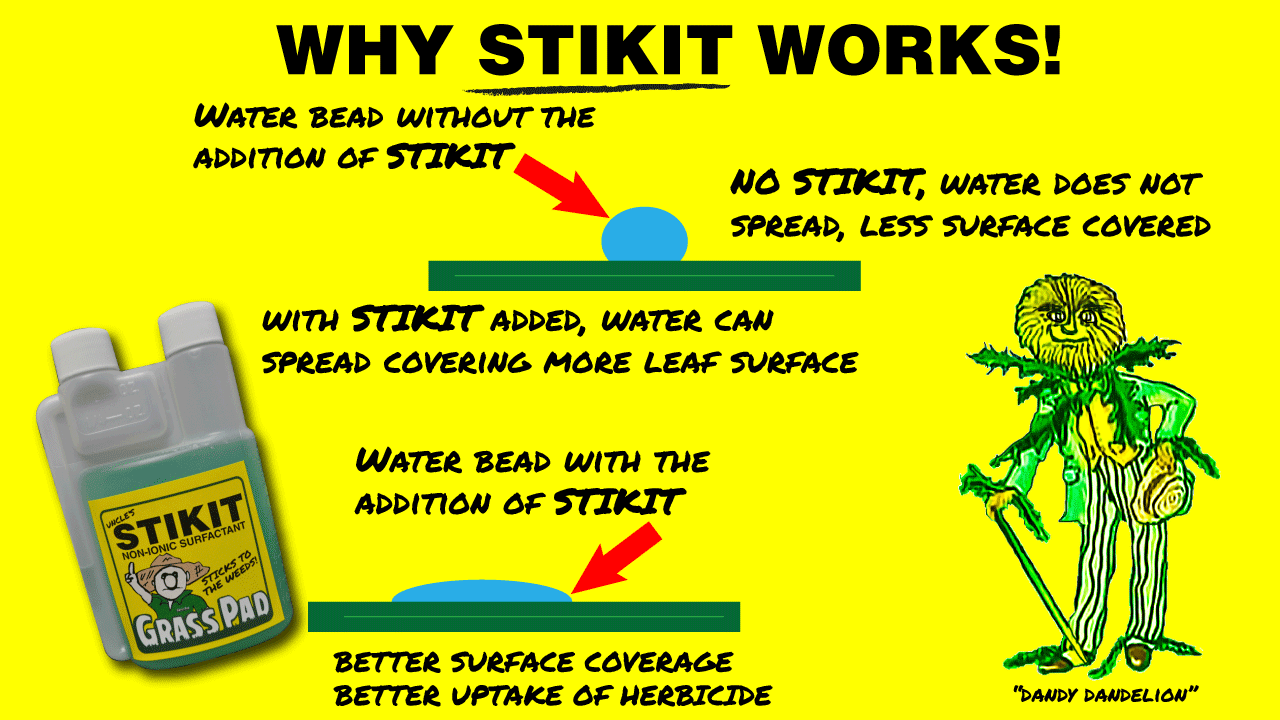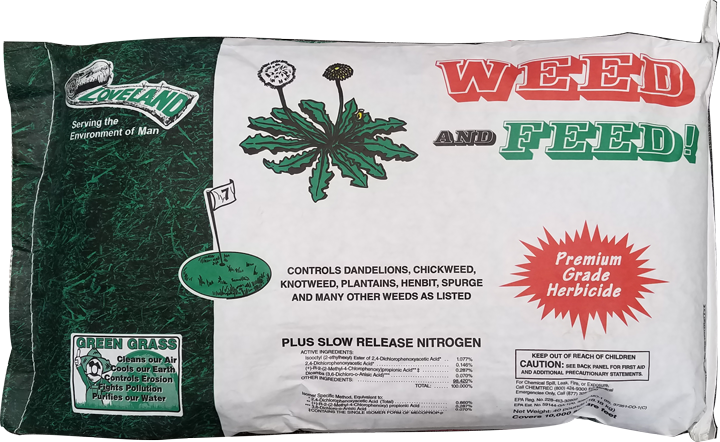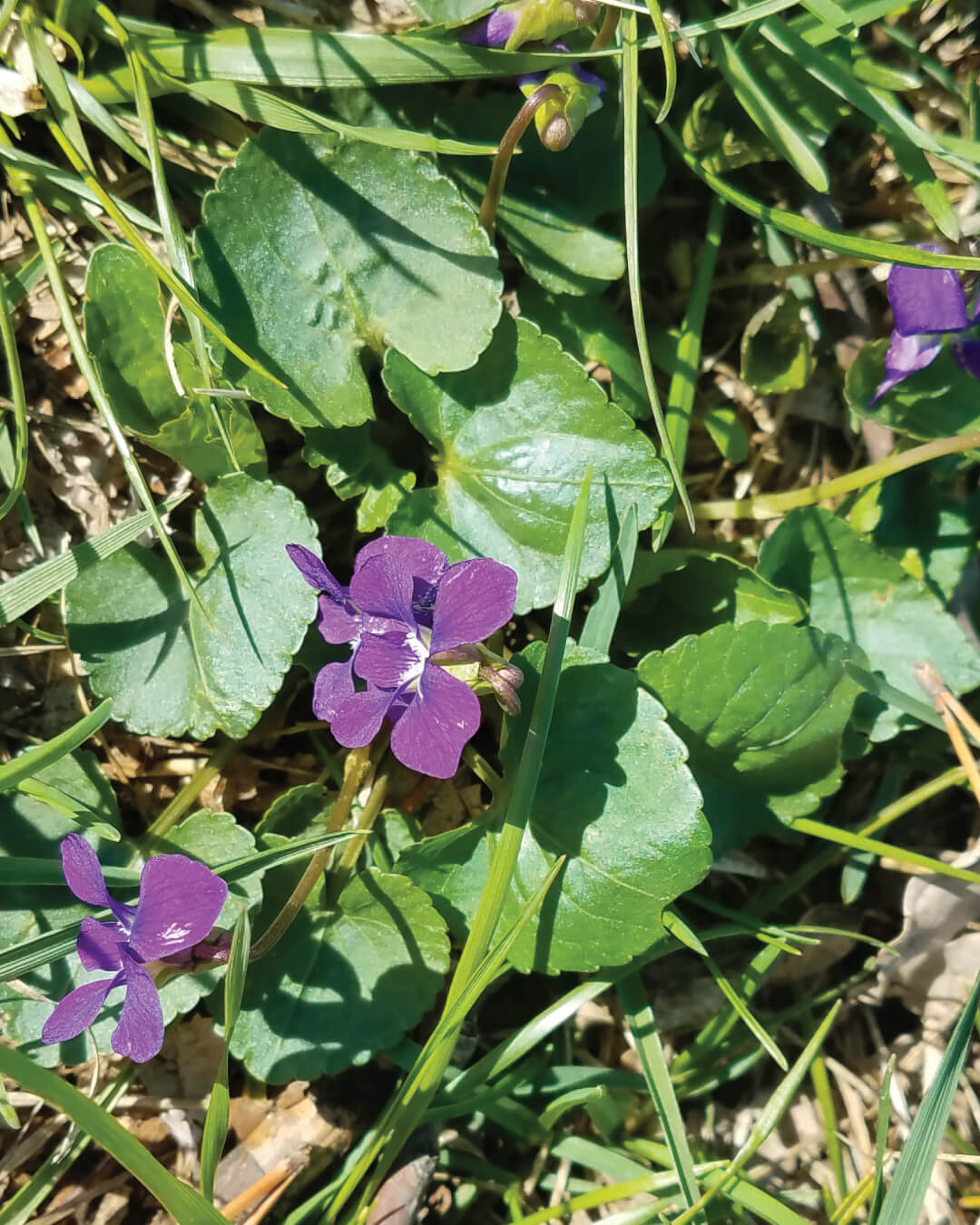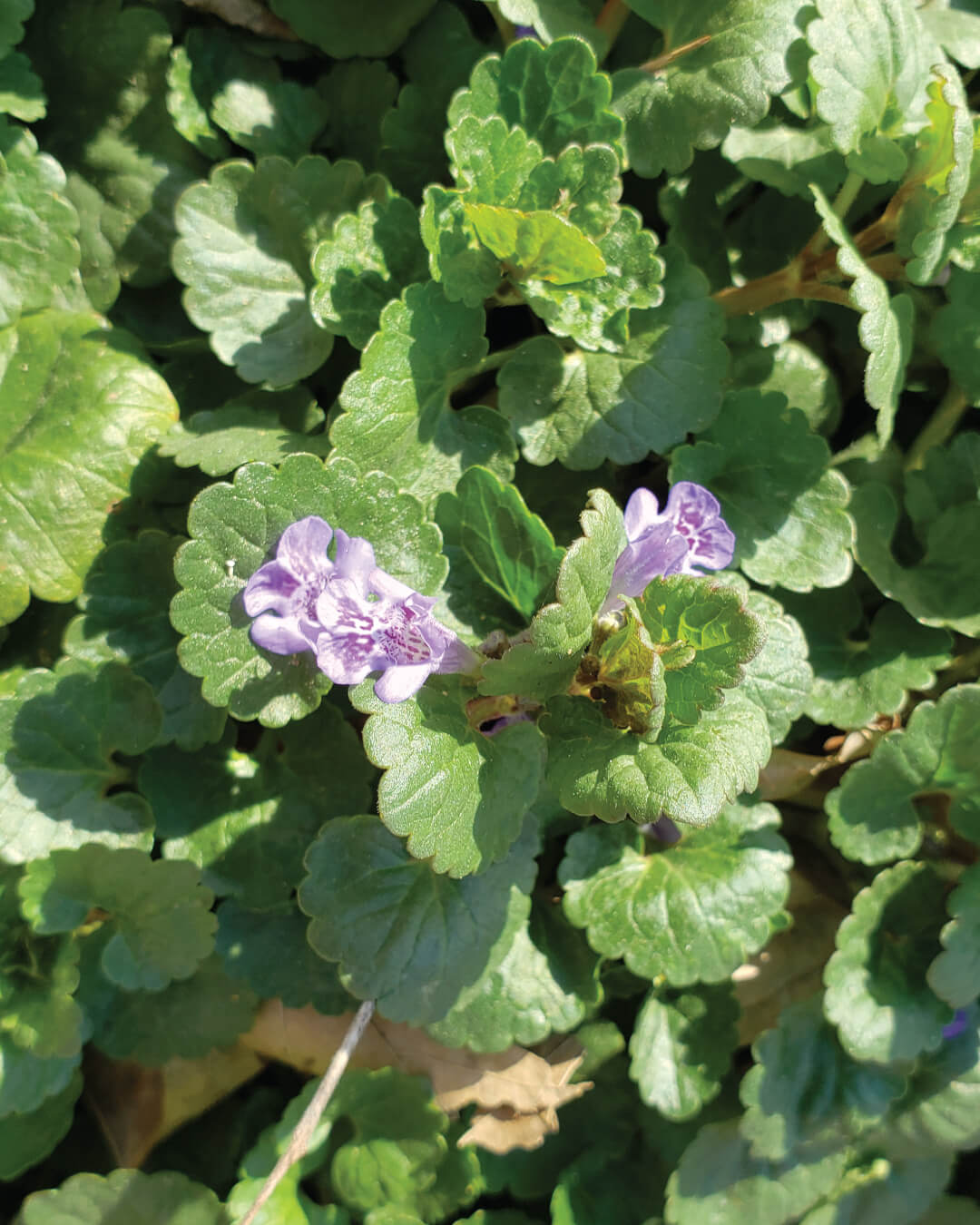Broadleaf weeds, like dandelions, henbit, clover, chickweed, and plantain, are often described as the “salad bar weeds” because they look like they might be on a salad bar at Hy-Vee. These and other broadleaf weeds can survive winter, and as soils warm in spring, they stretch out to fill in thin and bare areas in the yard. Controlling broadleaf weeds is not difficult, but timing is crucial for effective control.
Uncle’s Tip: Weeds can only move into a lawn if there is room for the weed seeds to spread and grow. The best weed preventer for your lawn is thick, healthy, vigorous grass. Eliminate the bare spots, and you will eliminate the weeds. The secret to a weed-free lawn is to start early and get good turf grasses to fill the bare spots before the weeds do.
Best Cool-Season Broadleaf Weed Control
In early spring, winter broadleaf weeds such as henbit, chickweed, oxalis, dandelions, and an occasional thistle appear in lawns wherever there was a bare spot. A liquid application of SpeedZoneEW broadleaf weed killer is the best way to kill those tiny spring weeds. SpeedZoneEW gives rapid control of 90+ broadleaf weeds. A liquid application of SpeedZoneEW is your best choice for tiny leaf weeds like chickweed, clover, veronica, and henbit. Gordon’s SpeedZoneEW with Uncle’s Stikit added can be used effectively during cooler spring weather. SpeedZoneEW is more effective when the daytime air temperature is above 50°. Always use pesticides responsibly.
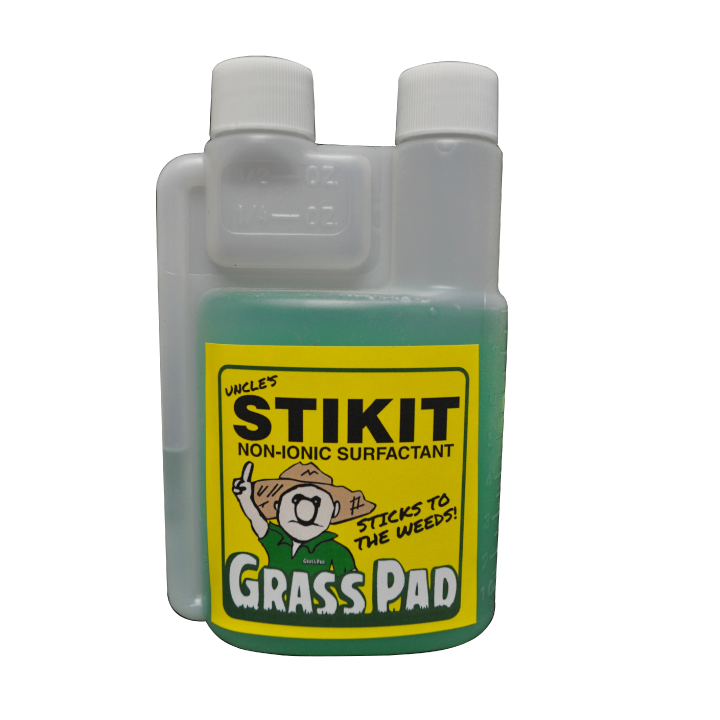
Uncle’s Stikit Enhances Results
Uncle’s Stikit, a non-ionic surfactant, improves weed-killing efficiency by increasing the spread and penetration of the active ingredient throughout the surface of the broadleaf weed. Humectants in Stikit extend drying time, encouraging increased herbicide uptake on broadleaf weeds. Also, be patient; these plants die more slowly at cool temperatures.
Broadleaf Weed Control Late Spring and Summer
Loveland Weed and Feed
When warm weather has arrived, the broadleaf weeds get a little larger. The larger the leaf, the easier the target, so Loveland Weed and Feed is an excellent granular control for broadleaf weeds. Using Weed and Feed has three great advantages:
- Professional strength herbicide for quick kill down to the roots.
- Contains fertilizer to encourage grass to thicken and fight weed pressure.
- Formulated specifically for use with Uncle’s Idiot Proof Lawn Care Program. Can be applied within days of Prevent crabgrass pre-emergent application.
SpeedZone® EW Broadleaf Weed Control in Summer
Spring and fall treatments are preferred to summer treatments for older, drought-stressed weeds. SpeedZoneEW broadleaf weed control applications are more effective when soil moisture is adequate and weeds are young and actively growing. If dry conditions exist, irrigating 24 hours before and 24 hours after the application will improve weed control. Using SpeedZoneEW when temperatures exceed 90°F may result in temporary turf discoloration.
Uncle’s Tip: SpeedZoneEW has some post-emergent control and suppression on goosegrass and nimblewill.
Broadleaf Weed Control in Fall
Mid-September to Mid-November is an excellent time to control broadleaf weeds like dandelions, plantain, curled dock, and thistle. In the fall, broadleaf weeds are busy collecting energy from photosynthesis and storing it in the crown and roots. Loveland Weed and Feed and Speed Zone®EW contain systemic broadleaf weed herbicides that will move through the leaf tissue and into the crown and roots for a complete kill. Killing broadleaf weeds in fall will allow turf to fill in the bare spots before crabgrass or other weeds germinate the following spring. Fall applications of Speed Zone®EW give excellent control over emerged winter annuals and perennials, including henbit, chickweed, clover, and ground ivy. Speed Zone®EW will be most effective when daytime temperatures are above 50°; however, Weed and Feed is most effective when temperatures are above 65°.
See Related: Broadleaf Weeds When Overseeding
How to Get Rid of Creeping Charlie and Wild Violet
When Creeping Charlie and Wild Violet show up at the party, use Triad or T-Zone* to run them out of town. Ground ivy (aka Creeping Charlie) and wild violet are particularly challenging weeds to control. Triad or T-Zone* delivers excellent cool-weather control for these hard-to-kill broadleaf weeds. Triad or T-Zone*, a selective weed control, will not harm cool-season grasses, much like Speedzone. The addition of triclopyr and sulfentrazone in the Triad or T-Zone* formula in the precise ratio show an improved performance against tough weeds like ground ivy, wild violets, and clover in turf. Triad or T-Zone* also provides suppression of young and actively growing nutsedge. The best time to control these weeds is when they actively grow in spring and fall.
If you don’t want to spray, the best management would be to make the environment around them unfriendly for them to grow. Ground Ivy and wild violet prefer moist shady areas. Correcting drainage issues in the area can help. More sunlight can be added by removing low tree branches. Mowing those areas higher to allow the grass to grow taller to limit the amount of sunlight reaching the weeds. Reseeding problem areas multiple times per season will work to fight invasive weed pressure. These are just a few fundamental management practices to help the need for herbicides applications.
*Triad and T-Zone: NOT RECOMMENDED FOR USE OVER WARM SEASON GRASSES
Uncle’s Tip: Before using any pesticide, always read the label directions for use.
More Related Articles to Weed Controls
Annual Grassy Weeds – Preventing Crabgrass
- Keeping grass weeds out of your lawn. Learn More at this Link
Controlling Grassy Weeds in Summer
- Post-emergent control for ugly summer weeds. Learn More at this Link
Nut Buster for Nutgrass Control
- Kill Nutgrass and not harm the good grass. Learn More at this Link
Summer Lawn Survival Tips
- Tips for Summer Lawn Survival Learn More at this Link

